Cold weather brings a common challenge for every home — finding reliable heating that fits your lifestyle and budget.
A fireplace TV stand offers dual functionality, combining your media setup with the warmth and glow of an electric fireplace. A space heater takes a different approach. It’s a portable device designed purely for heating and is easy to move between rooms.
Both have clear advantages. This guide compares their heating performance, safety, design impact, and overall value to help you choose what’s right for your space.
What Is a Fireplace TV Stand?
A fireplace TV stand combines two living room essentials—a media console and an electric fireplace. You get warmth, storage, and a cozy glow in one piece of furniture.
It usually includes three main parts:
- Furniture base: shelves and cabinets for media gear, plus a sturdy top for TVs up to 65 inches.
- Heating system: an electric element with a built-in fan that warms spaces up to about 400 square feet.
- Flame display: LED lighting that looks like real fire. You can adjust brightness and sometimes change flame colors.
How it Works: Setup takes minutes. Just plug it into a standard outlet — no venting or gas line needed. You can also use the flame display without heat, so it works year-round. Some models even add gentle crackling sounds to create an extra atmospheric effect.
A fireplace TV stand doesn’t just heat your room—it becomes a design centerpiece that saves space and adds comfort.

What Is a Space Heater?
A space heater focuses on one job—warming specific areas quickly. It’s portable, affordable, and easy to move wherever you need heat.
There are four main types:
- Infrared heaters warm you directly, like sunlight.
- Convection heaters heat the air around them.
- Ceramic fan heaters blow hot air where you point them.
- Oil-filled radiators give steady, quiet warmth that lasts.
How it Works: Plug it in, turn it on, and it starts heating immediately. Because they’re lightweight, you can move them from the living room during the day to the bedroom at night. They’re great for spot heating without running your central system.

Heating Performance Comparison
Both options help lower heating costs by letting you warm only the space you’re using and turn down your main thermostat.
Most models share similar power specs—about 1,500 watts and 5,100 BTUs.
Heating Area
On paper, both claim to heat up to 400 square feet, though some list 1,000. In real homes, fireplace TV stands work best for living rooms around 400 square feet, while space heaters suit smaller spots like offices or bedrooms (150–300 sq. ft.).
Insulation, ceiling height, and window drafts all affect real performance.
Heat Dispersion
Fireplace TV stands use built-in fans to spread warmth evenly.
Space heaters vary:
- Infrared models warm you directly
- Oil-filled types radiate steady, quiet heat
- Fan-forced ones blow hot air where you point them
Primary vs. Supplemental Heat
Neither option replaces central heating. They’re meant for zone heating—keeping the room you’re in warm while saving energy.
Efficiency
All electric heaters turn 100% of electricity into heat.
The difference lies in feel: infrared warms you instantly, while oil-filled heaters hold heat longer for steady comfort.
Ambiance & Aesthetics
This is where the two options truly differ.
Fireplace TV Stand
A fireplace TV stand does more than warm your room — it changes how it feels. The LED flame effect creates a cozy, inviting look that quickly becomes the center of attention.
You can run the flame display without heat, perfect for summer movie nights when you want the look of a fire without the warmth.

Space Heater
Space heaters focus on function, not style. Most look like small towers or metal boxes that you’ll want to tuck away when not in use.
They don’t add much to your décor and usually end up stored in a closet once winter is over.
Space and Convenience
Your choice comes down to permanence versus flexibility.
Footprint & Space Usage
A fireplace TV stand takes up about as much space as a media console but combines two needs—TV storage and heating—into one.
A space heater takes less floor space but needs about three feet of clearance from furniture, curtains, and walls for safety, which can be tricky in small apartments.

Portability & Placement
Once assembled, a fireplace TV stand stays where it is—it’s part of your room’s layout.
A space heater moves with you. Keep it in your home office during the day and move it to your bedroom at night.
Ease of Setup
A fireplace TV stand needs some assembly time, like any other furniture piece. Expect to spend a few hours following the instructions.
A space heater is instant—just unbox it, plug it in, and you’re ready to go.
Safety Considerations
Portable electric heaters cause thousands of home fires each year, according to the CPSC. Safety should always come first.
Exposed Heating Elements
Fireplace TV stands keep their heating elements sealed inside the cabinet, where kids or pets can’t reach them.
Space heaters vary by design. Some radiant types have visible coils, while others use protective grills that still get extremely hot inside.
Enclosed Heat & Cool-Touch Surfaces
Fireplace TV stands are designed with family safety in mind. The glass front stays cool to the touch, and the sides remain safe even when the heater is running.
Space heaters, on the other hand, often get hot on the outside. Their grills can cause burns, so it’s best to keep them away from walkways, play areas, and pet zones.
Stability
Fireplace TV stands are heavy and solid, much like a dresser. Their wide base makes tipping nearly impossible.
Space heaters are lightweight and easy to knock over. A curious child or playful pet can topple them easily. Most modern units now include tip-over shutoff switches and overheat protection, but prevention is always safer than relying on safety features.
Ventilation & Electronics Safety
Fireplace TV stands vent heat forward, directing warmth away from your TV, gaming console, or sound system above. This design protects your electronics from overheating.
Space heaters need open space around them to function safely. Never place them near entertainment centers, desks, or any area where airflow is blocked.
Usage Rules
Fireplace TV stands fit safely against a wall, just like any other piece of furniture. No special setup or clearance is required.
Space heaters demand stricter rules:
- Keep them at least three feet from curtains, blankets, and furniture.
- Plug them directly into a wall outlet, never a power strip or extension cord.
- Keep them away from water and turn them off before leaving the room or going to bed.
- Always ensure they’re upright, and clean any dust or lint buildup regularly.
Cost Comparison (Upfront and Operating)
You’re comparing two very different types of purchases—a long-term furniture investment and a budget-friendly appliance. Here’s how they really stack up.
Initial Purchase Price
Fireplace TV stands require a higher upfront investment. Most models cost between $200 and $800 or more, depending on size, materials, and features. These are solid furniture pieces built to last and add value to your home.
Space heaters, by contrast, have a much lower entry cost. Basic models start around $25 to $100, and even premium versions with digital controls or safety sensors stay relatively affordable. They deliver instant warmth without a large initial spend.
Longevity and Durability
A quality fireplace TV stand can easily last 10 years or more. It’s built like any well-made furniture item—sturdy, reliable, and made to handle daily use.
Space heater lifespan depends on build quality. Cheap fan-style heaters might fail after just a couple of winters. Oil-filled radiators and ceramic models typically last longer, but most space heaters still need replacement every 3 to 5 years.
Operating Cost
If both units use 1,500 watts, they cost roughly the same to run per hour—about 15 to 20 cents, depending on your local electricity rate.
What really changes your monthly bill is how long and how often you use them.
Both heating options can help reduce overall costs through zone heating. By warming only the room you’re in, you can turn down your central thermostat and save money on whole-home heating.
Other Costs
Fireplace TV stands don’t come with extra expenses once they’re set up. There’s no fuel, filters, or special maintenance required.
Space heaters, however, may need to be replaced more often, so replacement costs add up over time—even if each unit seems cheap individually.
Resale Value & Home Value
A fireplace TV stand retains some value over the years because it’s both functional and decorative. It enhances your living space with warmth and ambiance and can even make your home more appealing to future buyers.
Space heaters, on the other hand, have almost no resale value. They’re disposable appliances—useful in the short term, but not long-term investments.
Which Should You Choose? (Fireplace TV Stand or Space Heater)
The better choice depends less on performance and more on how you live—your space, budget, and the kind of comfort you want at home.
Choose a Fireplace TV Stand if:
- You want warmth that feels part of your living room, adding both comfort and visual balance.
- You’re upgrading your TV stand or media console and want a piece that combines storage, style, and supplemental heat.
- Safety matters most to you, especially with kids or pets, since the cool-touch glass and solid build reduce burn and tip-over risks.
- You’re making a long-term investment in durable furniture that anchors your space.
- You like the idea of enjoying the flame effect throughout the year, even without the heat.
Choose a Space Heater if:
- Your budget is tight, and you prefer a low upfront cost.
- Portability matters—you want something you can move from your office to your bedroom with ease.
- You already have the furniture you need and don’t want to add another large piece.
- You need quick, targeted warmth for short periods, like when working at your desk or warming a small bathroom.
- You value simplicity and plug-and-go convenience over design or decor.
If You’re Leaning Toward a Fireplace TV Stand…
If you’ve found that a fireplace TV stand suits your home, here are a few options to explore. Each piece offers its own balance of style, size, and function—so you can choose the one that feels right for your space.
Dale 43" Corner Fireplace TV Stand
This stand's 1400W fireplace provides powerful supplemental heat for rooms up to 400 sq. ft. It's designed for safety with overheat protection and includes a remote for easy control. It also functions as a space-saving, farmhouse-style TV stand for TVs up to 43".
Key Features:
- Powerful 1400W heater for rooms up to 400 sq. ft.
- Overheating safety protection and remote control
- Space-saving corner design fits TVs up to 43"
- Ample storage with tempered glass cabinets and a drawer
- Anti-tipping brackets for enhanced stability
Lenore 70" Fireplace TV Stand
This stand's integrated heater quickly and efficiently warms rooms up to 400 sq. ft. It's safe, featuring an auto shut-off, and operates quietly. It also serves as an elegant 70-inch media console, featuring crown molding and ample open shelving for a modern, functional centerpiece.
Key Features:
- Efficiently heats spaces up to 400 sq. ft.
- Safe & energy-efficient with overheat protection
- Adjustable flame and heat with remote control
- Fits large TVs (70-inch wide stand)
- Ample storage with six open shelves
Bower 68" Mid-Century Modern Fireplace TV Stand
This unit's 1400W heater warms rooms up to 400 sq. ft and is CSA/UL certified for safety. Its wide 36" fireplace offers a 4-level flame effect. It's also a stunning mid-century modern console for TVs up to 75", with ample rattan-door storage.
Key Features:
- Heats up to 400 sq. ft. with a 1400W, 36" wide fireplace
- CSA & UL Certified with overheat protection
- 4-level flame brightness with 8-hour timer remote
- Accommodates large TVs up to 75"
- Ample storage with rattan doors, drawers, and shelves
The Bottom Line
The choice really comes down to purpose—simple function or form with function.
Space heaters offer quick, affordable warmth. They take the chill out of smaller spaces without much effort.
Fireplace TV stands go further. They provide heat, storage, and style in one design, adding comfort and character to your living room.
One’s a straightforward fix for the cold. The other creates a lasting centerpiece that makes your space feel more complete.
Related Reading:




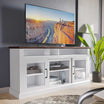

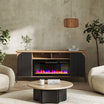


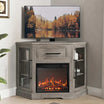


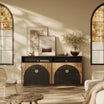

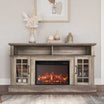
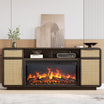

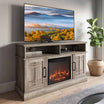

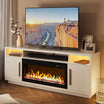


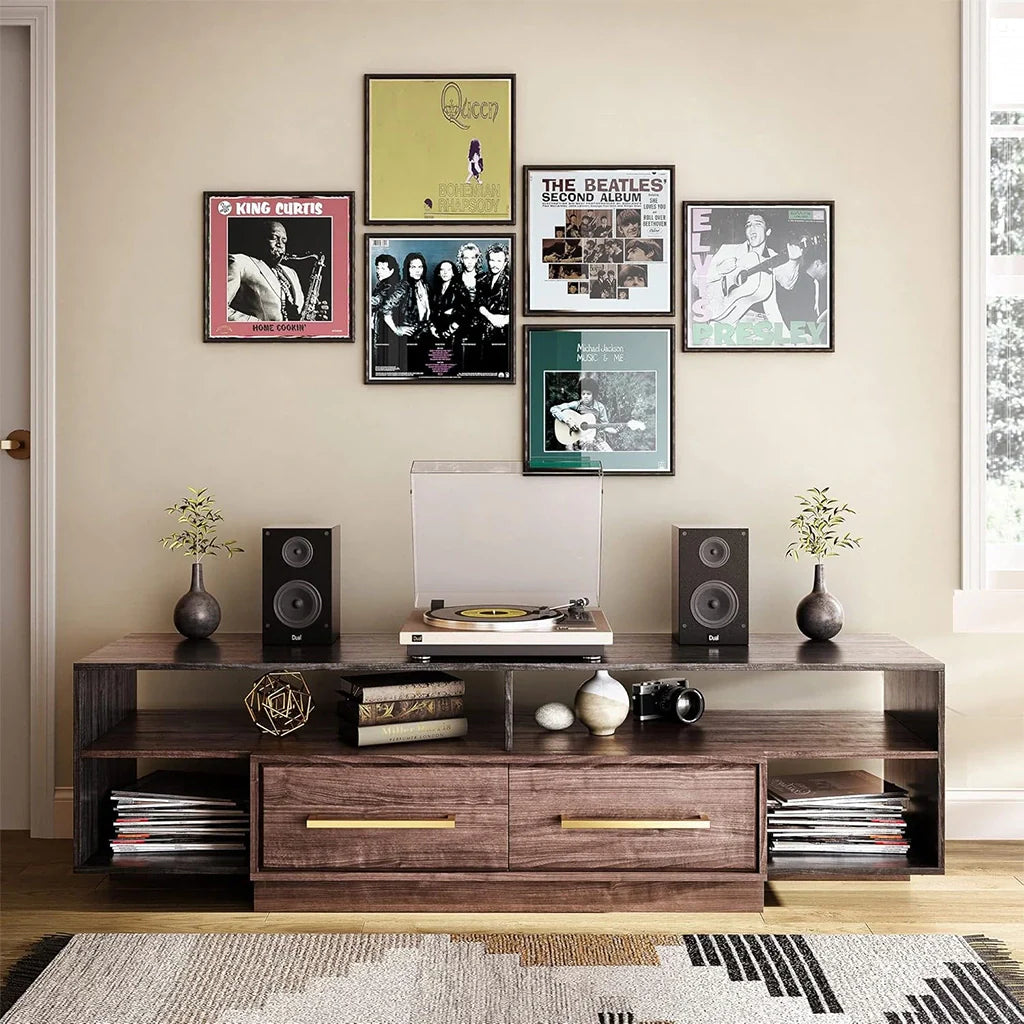
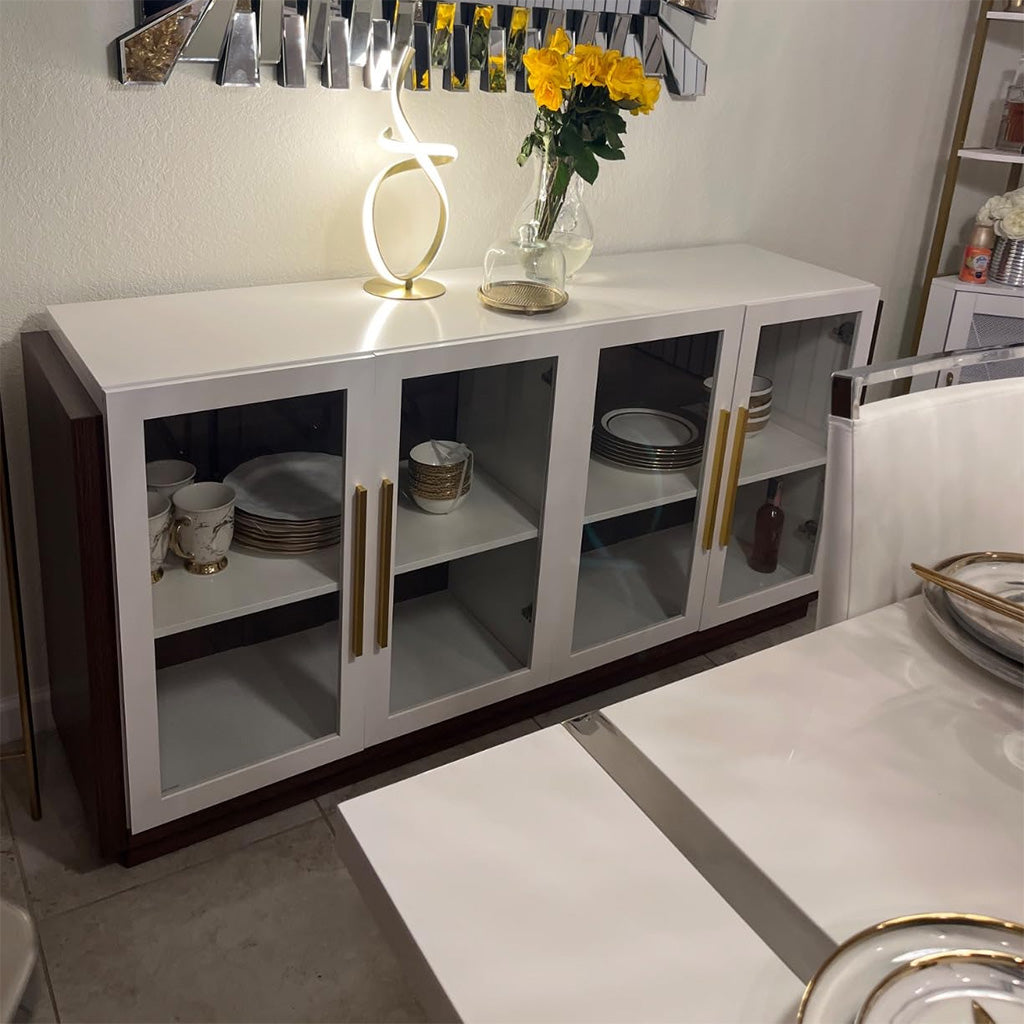
Leave a comment
This site is protected by hCaptcha and the hCaptcha Privacy Policy and Terms of Service apply.